A SHORT DESCRIPTION OF TANK GUNNERY
Tank gunnery training was conducted on tank ranges, and the exercises conducted on the ranges were called "tables," e.g., "Table VIII."1 Each table was intended to be more challenging than the preceding one, using the crawl-walk-run approach.
The period just before gunnery was devoted to pre-gunnery training, using simulators, "dry-fire" (or "TCPC") courses, and the mini-tank range. TCPC stood for "Tank Crew Proficiency Course," and was a maneuver area where the crew practiced maneuvering and engaging targets without firing any live ammunition. The mini-tank range was a live fire range where the tanks remained stationary on the firing line and engaged miniature targets using the "Brewster" device, which consisted of an M16 rifle, converted to fire .22 cal. long rifle rounds, mounted over the tank's main gun tube. This allowed Army units to conduct the initial phases of tank gunnery training for much less than the cost of full-scale firing with live ammunition, and on ranges that were a lot smaller (and easier to operate) than full-size tank ranges.
The units then moved to full-size tank ranges for the remaining tank tables. Table IV consisted of boresighting and zeroing the tank's weapons. Table V was a moving tank range (i.e., the tanks negotiated a course, moving from firing position to firing position) where the crews fired their machine guns and engaged main gun targets using the "Telfare" device, which consisted of an M2 .50 cal. Machine Gun converted to fire single shots, mounted over the tank's main gun tube. Tank Table VI was a stationary range where the crews fired their machine guns and the tank's main gun. Tank Table VII was a moving tank range where the crews fired their machine guns and the tank's main gun. Tank Table VIII was similar to Table VII, but was fired on a different range so it presented new challenges to the tank crews. Table VIII was the exercise that was graded and that determined whether a tank crew qualified, distinguished – or "bolo'd."
During the Cold War, CONUS units generally conducted two gunneries per year, while units based in Germany and Korea were authorized more ammunition and were able to shoot four times a year. In each case, one gunnery per year was designated as "qualification gunnery," while the remaining gunnery exercises were called "sustainment gunnery." Only qualification gunnery included Table VIII. Whether the participants earned the treasured patch (and the year's worth of bragging rights that came with it) depended solely on their performance on Table VIII; all the previous tables were considered preparation. Either qualification or sustainment gunnery could include a Table IX Platoon Battle Run,2 or even a Table X Company/Troop Battle Run. I have heard that some units even conducted a battalion/squadron level battle run. Tables VI through VIII (and sometimes Tables IX and X) included both a day and night component, with illumination for the night phase supplied by mortar or artillery illumination rounds (a magnesium flare suspended below a parachute) and/or tank searchlights, which could provide either white light or infrared illumination. Infrared light is invisible to the naked eye and can be detected by special infrared sights. Weapon systems with "passive" sights (which magnified the available ambient light) or thermal sights (which sense the different amounts of heat emitted by different objects) did not require illumination to conduct night gunnery.
The crews were scored primarily on accuracy and speed, with other considerations -- such as ammunition conservation, crew drill (whether the crew followed all the procedures specified by the Army), and processing timely and accurate reports over the radio -- sometimes also taken into consideration. Speed could be evaluated in two different ways. "Opening times" evaluated how long it took a crew to begin to engage a target, once it (or the firing tank) was exposed, and "closing times" evaluated how long it took a crew to complete an engagement. Each crew was expected to achieve at least a "qualified" score. For those that failed, it was a black mark for the crew – and especially for the tank commander, who was responsible for training his crew and ensuring they were combat ready.
In my unit (2nd Sqdn, 3rd Armored Cavalry Regiment), we referred to gunnery as "Cavalry Gunnery" because we also tested the scouts, mortars, and self-propelled howitzers assigned to the Squadron. The capstone training event for the scouts was the "Scout Section Proficiency Course" ("SSPC" – pronounced "sis-pick"), where the four M113 series Armored Personnel Carriers in each scout section would conduct a live-fire zone reconnaissance. They would be required to engage targets, dismount to conduct a hasty breach of a minefield, call in indirect fire, and submit timely and accurate reports to higher headquarters. In addition, the section would conduct a dismounted reconnaissance patrol at night and would have to gather accurate intelligence concerning a simulated enemy position.
Each troop's mortar section was tested performing a "hip shoot," which involved the M106A1 Mortar Tracks driving down a road on a range and receiving a call for fire. The section would have to pull off the road and quickly engage the target.
These photos were taken by the author at the May 1983 gunnery (unless indicated otherwise) conducted by 2nd Sqdn, 3rd Armored Cavalry Regt. Unless noted otherwise, these photos depict Troop G, 2/3 ACR.
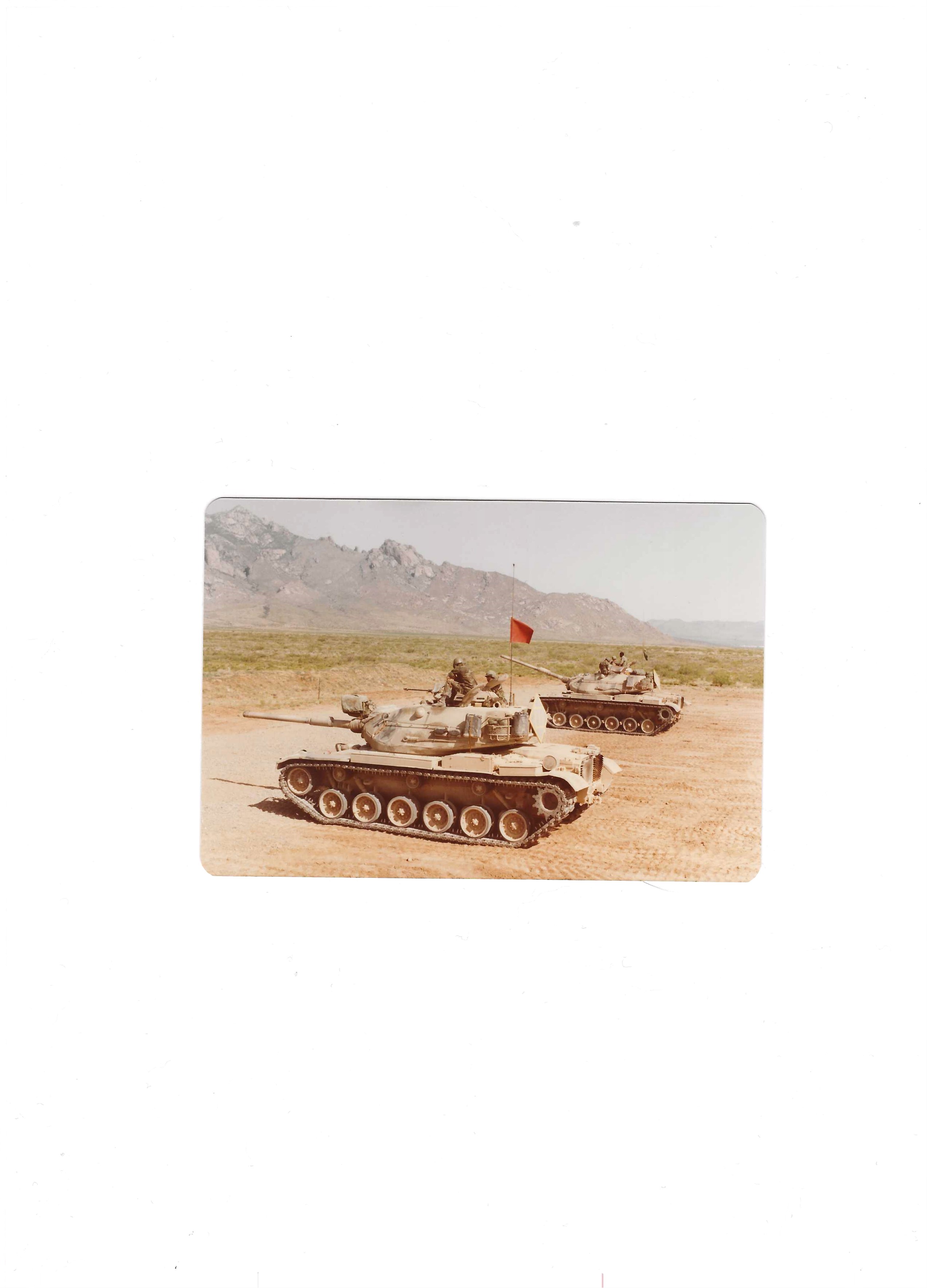
Figure 1
Tank Table VI. The M60A1 Main Battle Tank in the foreground is preparing to engage targets; the red flag means its weapons are loaded. The tank in the background is flying a green flag, which means its weapons are not loaded.

Figure 2
This photo shows a tank moving on a tank range. Its weapons are pointed up and downrange, for safety purposes. The soldier walking in front of the tank is a ground guide, which was mandated whenever tanks were moving in proximity to dismounted personnel. The platform with stairs behind the tank was used by the crews to load ammunition into the tanks.
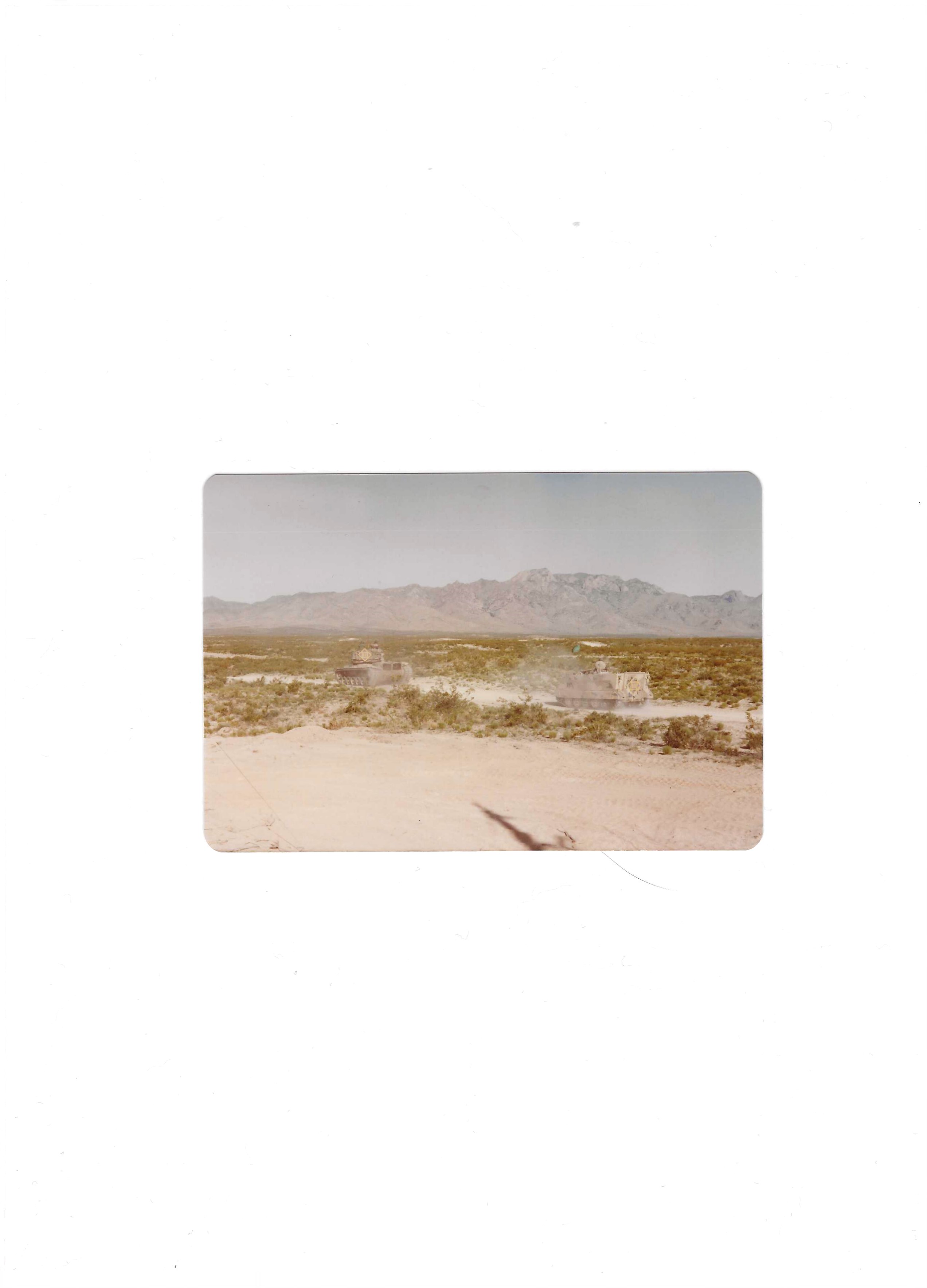
Figure 3
This photo shows a tank negotiating Tank Table VIII. The M113A1 APC following the tank is carrying the range control officer/safety officer, who was responsible for overseeing safety and determining if the tank hit its target.
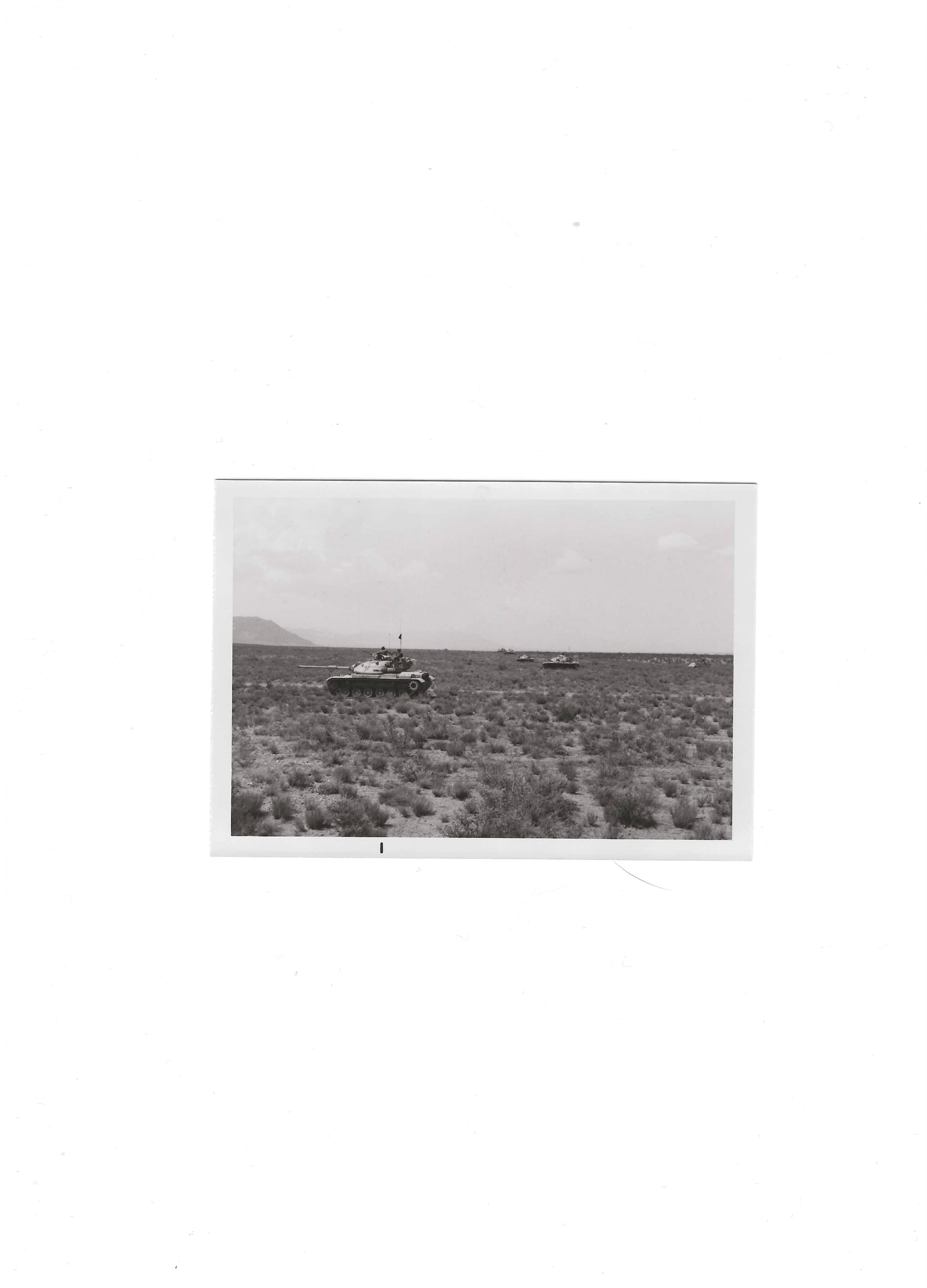
Figure 4
Company H, 2/3 ACR conducting a company battle run (Table X).
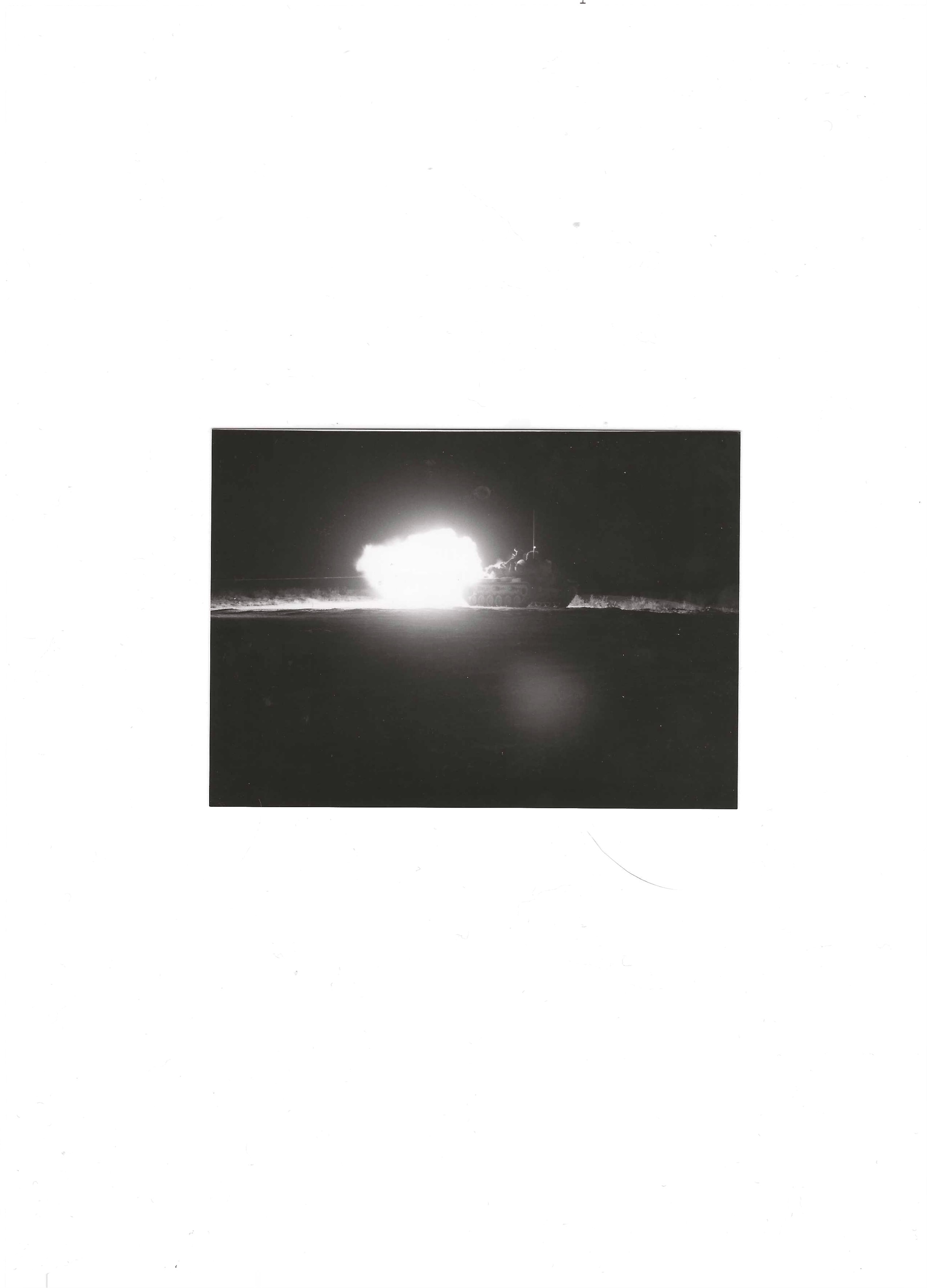
Figure 5
An M60A1 firing its main gun during night tank gunnery. Note how the muzzle blast is larger than the tank. This photo was taken by mounting the camera on a tripod, opening the shutter shortly before the tank fired, and then closing the shutter after it fired. This photo was taken during the February 1983 gunnery.
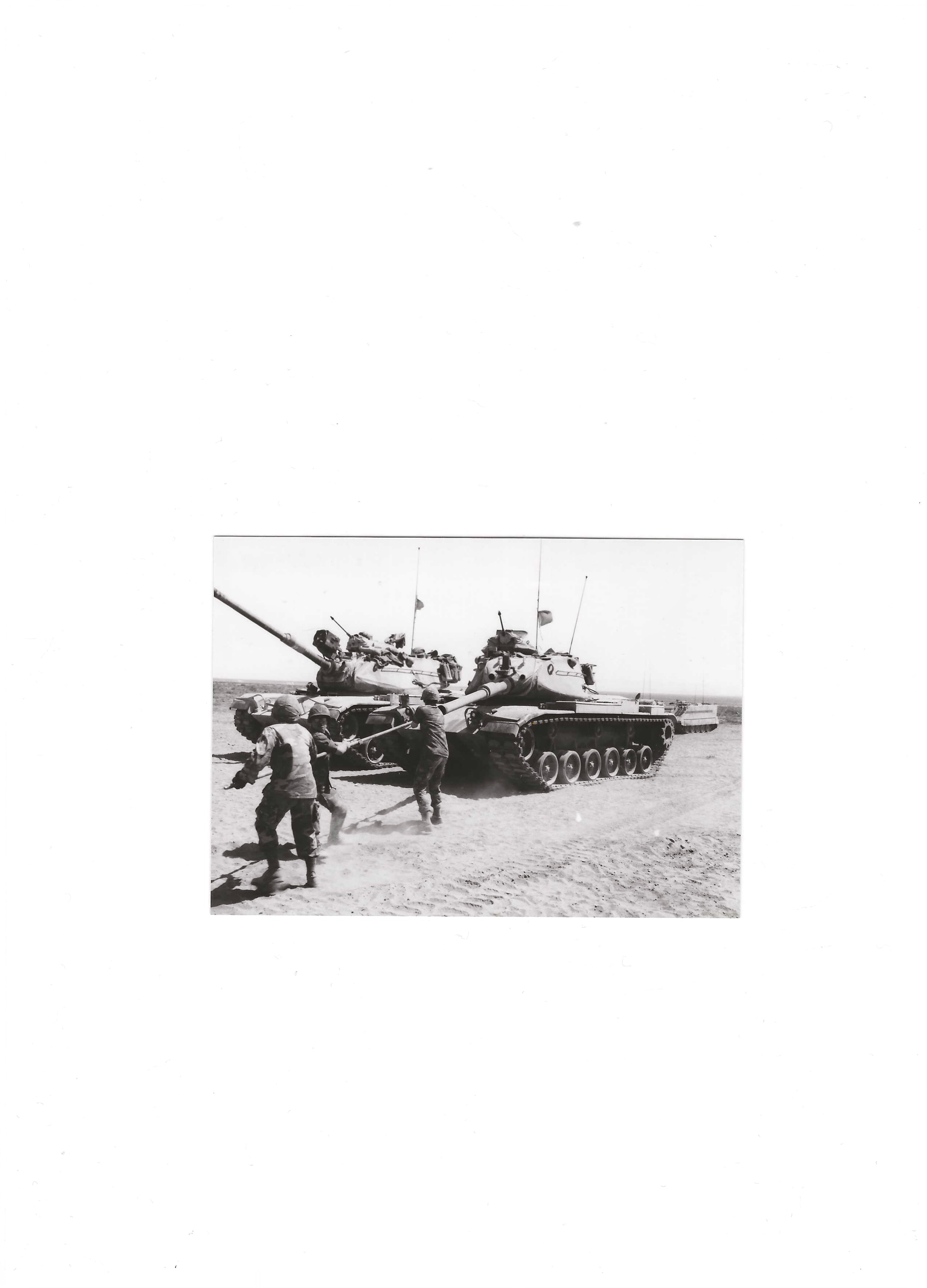
Figure 6
“Punching the gun tube.” This consisted of running a wire bore brush soaked in solvent back and forth through the gun tube. The bore brush was a tight fit, which explains why it took three soldiers to get this done.
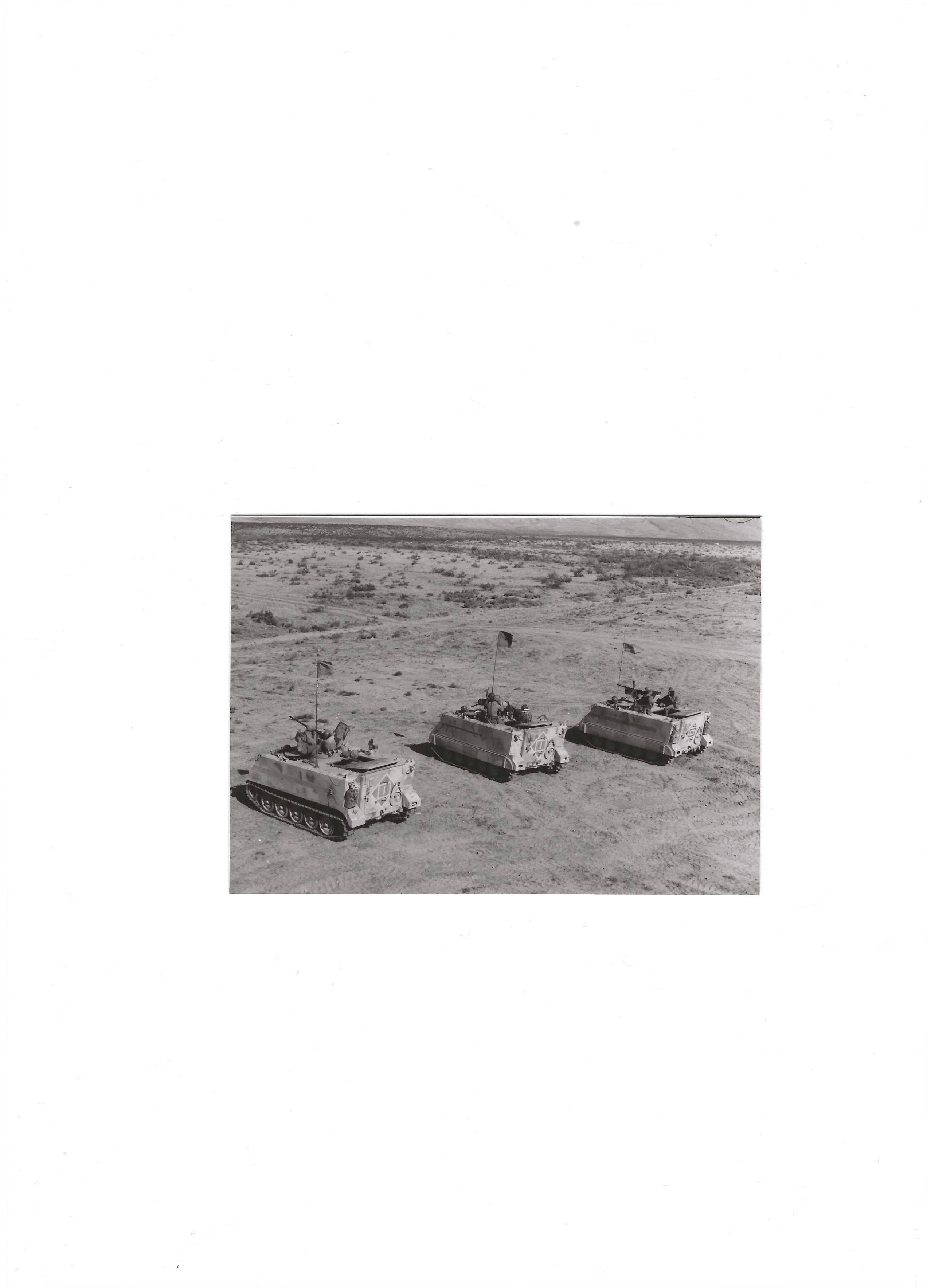
Figure 7
Scout tracks engaging targets with their M2 .50 cal. Machine Guns. This photo was taken from the range tower.
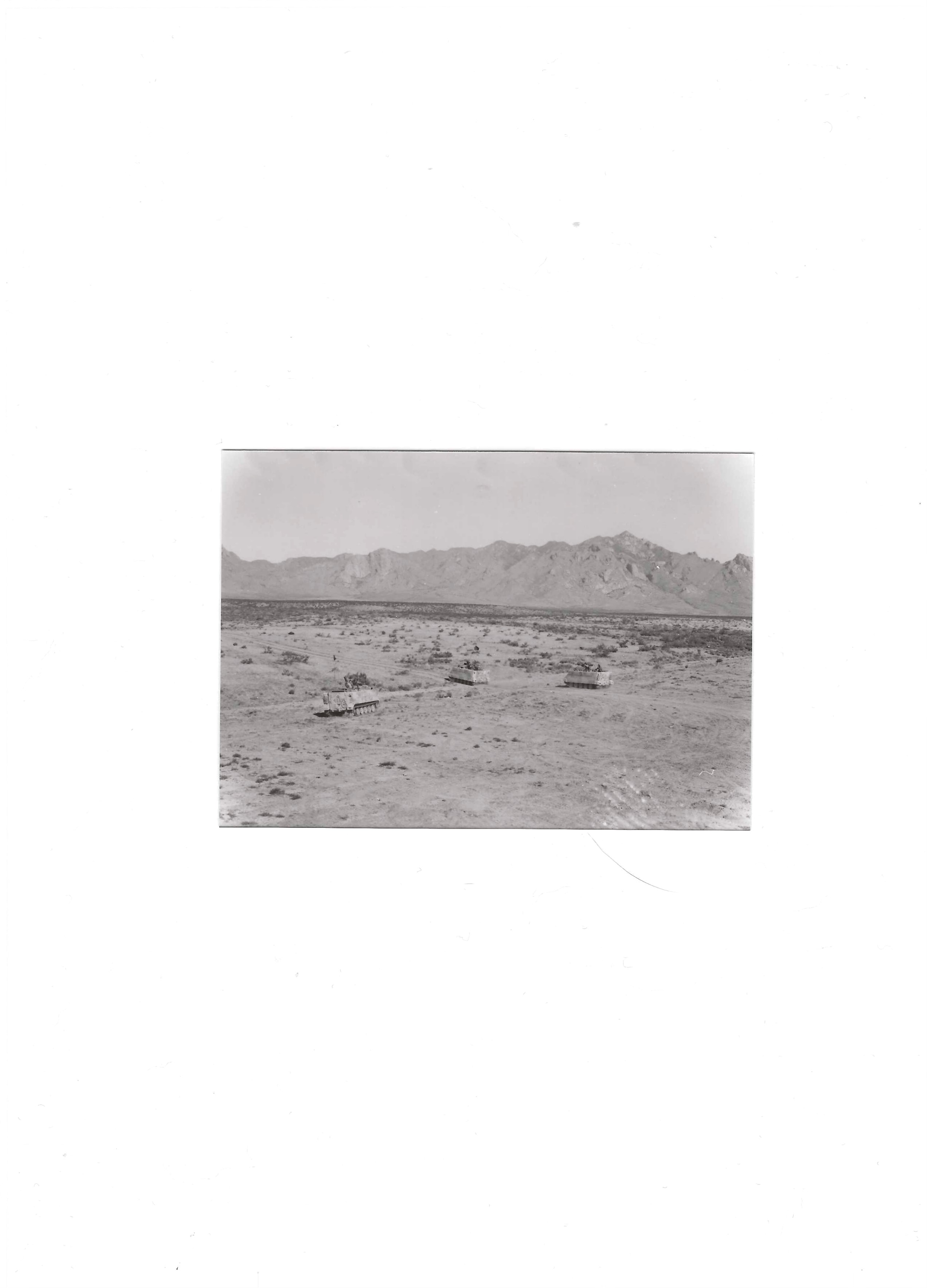
Figure 8
Most of a scout section (three scout tracks) practicing maneuvering, preparing for the Scout Section Proficiency Course.
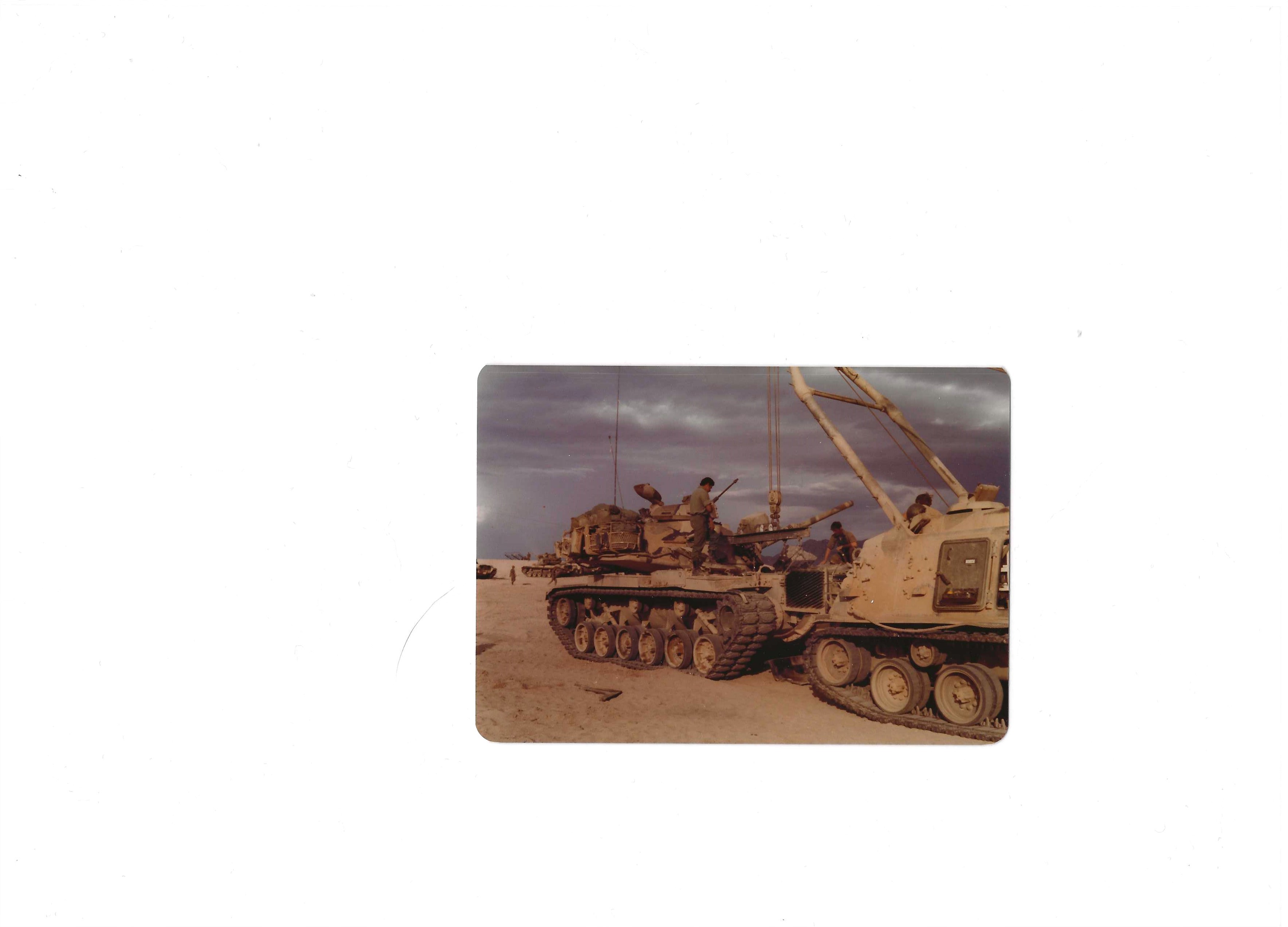
Figure 9
Pulling the pack (engine and transmission) of an M60A1 Main Battle Tank. Behind the tank is an M88A1 Armored Recovery Vehicle. This photo was taken during the February 1983 gunnery.
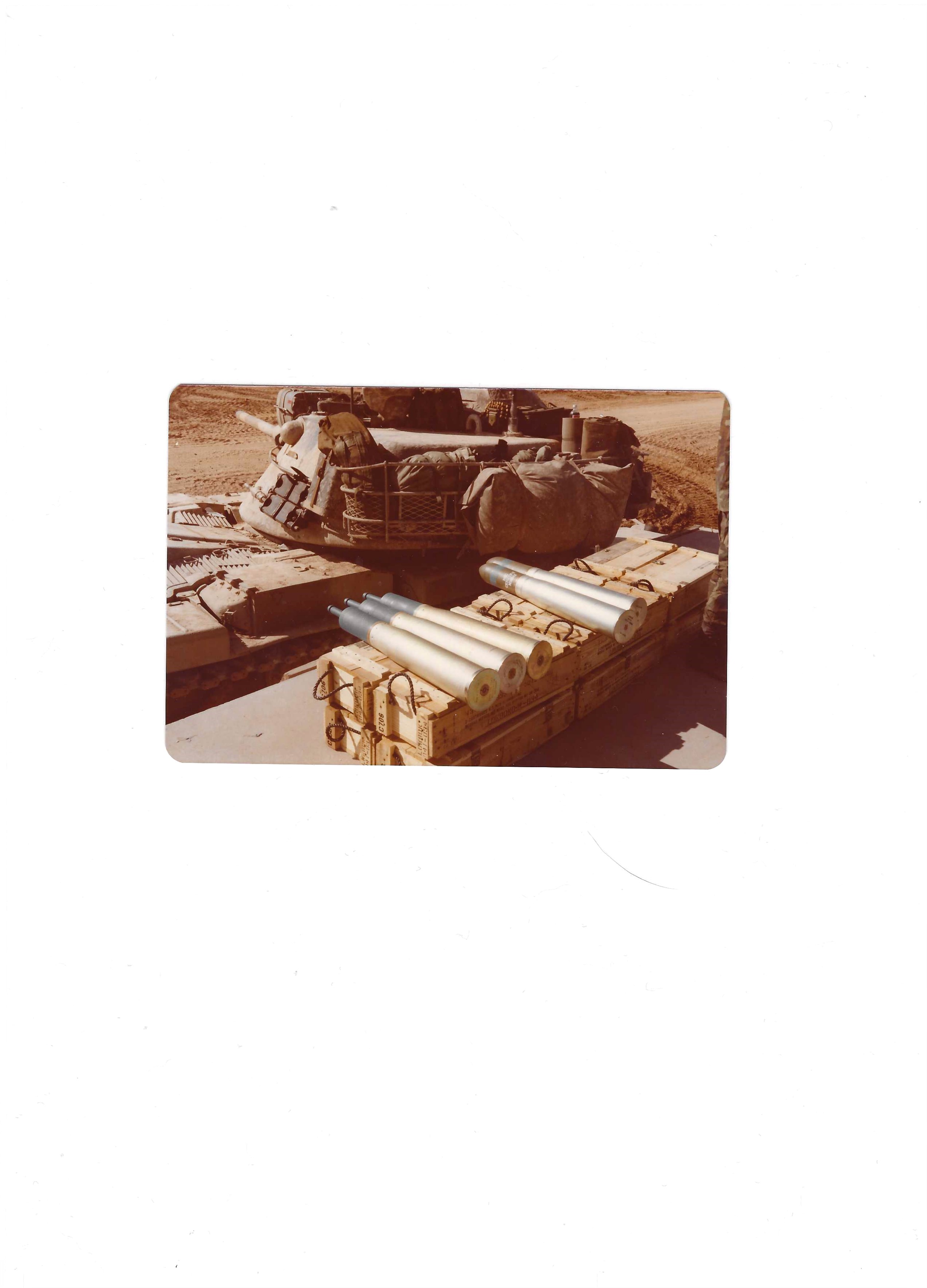
Figure 10
Loading main gun ammunition into an M60A1 Main Battle Tank. In the foreground are three HEAT (High Explosive Anti-Tank) rounds, with two HEP (High Explosive Plastic) rounds to the right. This photo was taken during the February 1983 gunnery.
Endnotes
1. This article uses the past tense because it addresses how tank gunnery was conducted in the early 1980s.
2. In a platoon battle run, the entire platoon would conduct a live-fire tactical exercise. For example, the platoon might move to a location and establish an assembly area, where it would be required to maintain 360 degree security while uploading ammunition and fuel, and an operations order was issued. The platoon would then depart the assembly area and road march to the range, where it would deploy on line and conduct a live fire attack involving all of the platoon's organic weapons, along with mortars, artillery, and possibly Army attack helicopters and/or Air Force close air support aircraft. At the end of the exercise, the platoon would consolidate on the objective, establish security, and submit various reports to troop headquarters in preparation for its next mission.